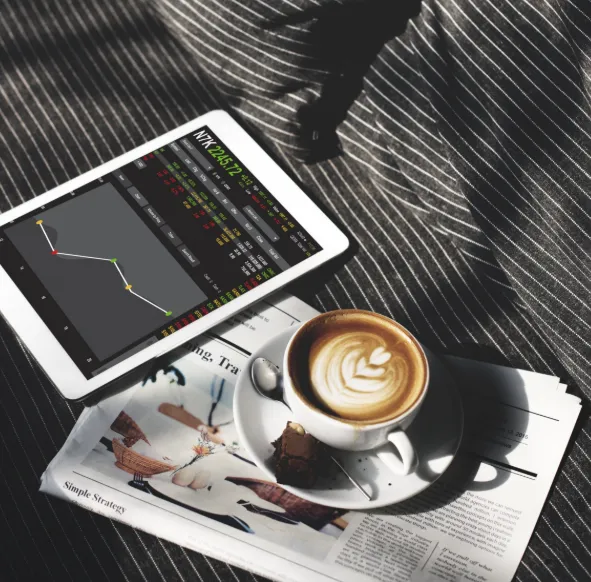In today’s fast-paced financial markets, traders are increasingly relying on technology to gain an edge—and algorithmic trading is leading that charge. With automation and data-driven logic, traders can execute strategies more efficiently and reduce the emotional impulses that often derail manual trades. For day traders, integrating algorithmic systems into their workflow can significantly enhance both precision and profitability.
Let’s explore what algorithmic trading is, how it works, and the strategies that can sharpen your trading performance.
What Is Algorithmic Trading?
Algorithmic trading involves using computer programs to execute trades based on a predefined set of instructions. These instructions can include price levels, timing, volume, and other market-related factors. Once programmed, the algorithm operates without human intervention, making real-time decisions based on current market data.
This approach is designed to:
- Eliminate emotional trading decisions
- Improve trade execution speed
- Analyze multiple indicators simultaneously
- Reduce human error in fast-moving markets
In some cases, traders adopt high-frequency trading (HFT) techniques, which involve making thousands of trades in seconds to capitalize on small price movements.
How It Works
The process begins with coding a strategy that reflects the trader’s objectives. This could be as simple as buying a stock when it drops 3% in a day or as complex as arbitrage between correlated assets across multiple markets.
Once set up, the algorithm monitors live market data and executes trades when conditions are met. Traders can then adjust parameters as needed, optimizing performance over time.
Key Advantages of Algorithmic Trading
- Emotion-Free Execution
Trading decisions are based entirely on logic and predefined rules, reducing the risks associated with fear or greed. - Speed and Efficiency
Algorithms process data and place trades faster than any human can, helping traders capture fleeting opportunities. - Backtesting Capabilities
Before going live, strategies can be tested on historical data to identify strengths and weaknesses. - Scalability
Automated systems can monitor multiple assets and markets simultaneously, something manual traders would struggle to do effectively.
Potential Drawbacks
While the benefits are significant, algorithmic trading is not without challenges:
- Lack of Oversight: If a bug exists in the code or if market conditions shift unexpectedly, the system could execute unintended trades.
- Technical Knowledge Required: Traders may need programming skills or third-party platforms to implement and modify strategies.
- Overfitting Risk: Customizing a strategy too closely to past data can result in poor performance under new market conditions.
Careful monitoring and ongoing refinement are essential to managing these risks.
Top Algorithmic Strategies for Day Traders
1. Mean Reversion
This strategy is based on the idea that asset prices eventually return to their average. When an asset’s price moves significantly above or below its historical mean, the algorithm can trigger trades that anticipate a return to the norm.
2. Momentum and Trend Following
Algorithms detect trends using tools like moving averages and relative strength indicators. When momentum aligns with trend signals, the system enters trades in the direction of the move, aiming to ride it until signs of reversal appear.
3. Arbitrage
Price differences between exchanges or correlated assets present short-lived opportunities. Algorithms can simultaneously buy and sell the same asset in different markets, locking in profit before the discrepancy disappears.
4. Statistical Arbitrage
This strategy compares historically correlated assets. When they diverge temporarily, the algorithm trades in anticipation of them returning to their normal relationship. It’s data-intensive and often best handled with fast, high-capacity systems.
5. Weighted Average Price Models
These strategies aim to execute trades near the average price of a security over a specific period. By factoring in volume or time, the algorithm avoids market impact and attempts to secure fair pricing across the execution window.
Additional Algorithmic Approaches
Here are more methods that traders use to refine their automated systems:
- VWAP (Volume-Weighted Average Price): Breaks orders into smaller parts to match the average market price weighted by trade volume.
- TWAP (Time-Weighted Average Price): Spreads trades evenly over a set period to minimize price impact.
- POV (Percentage of Volume): Trades a percentage of the total market volume at a given time, adapting to current liquidity.
- Implementation Shortfall: Focuses on minimizing the cost between the theoretical entry price and actual execution.
- Risk-On/Risk-Off Detection: Uses market sentiment analysis to shift between aggressive and conservative trading modes.
- Inverse Volatility Strategies: Capitalize on falling volatility through tailored instruments and timing trades based on shifts in market expectations.
- Black Swan Monitoring: Designed to detect unusual volatility or market events and react by limiting exposure.
- Index Rebalancing Exploits: Times trades around known index fund adjustments to benefit from temporary price distortions.
Final Thoughts
Incorporating algorithmic trading into a day trader’s toolkit can offer a significant edge—improving speed, consistency, and scalability. However, success depends on more than just plugging in a strategy. It requires a solid understanding of markets, a willingness to adapt, and a reliable technical setup.
For best results, traders should invest in robust hardware and software capable of handling real-time data processing and execution. Whether you’re fine-tuning your system or just getting started, a strong algorithmic foundation can help you stay ahead in an increasingly automated marketplace.













